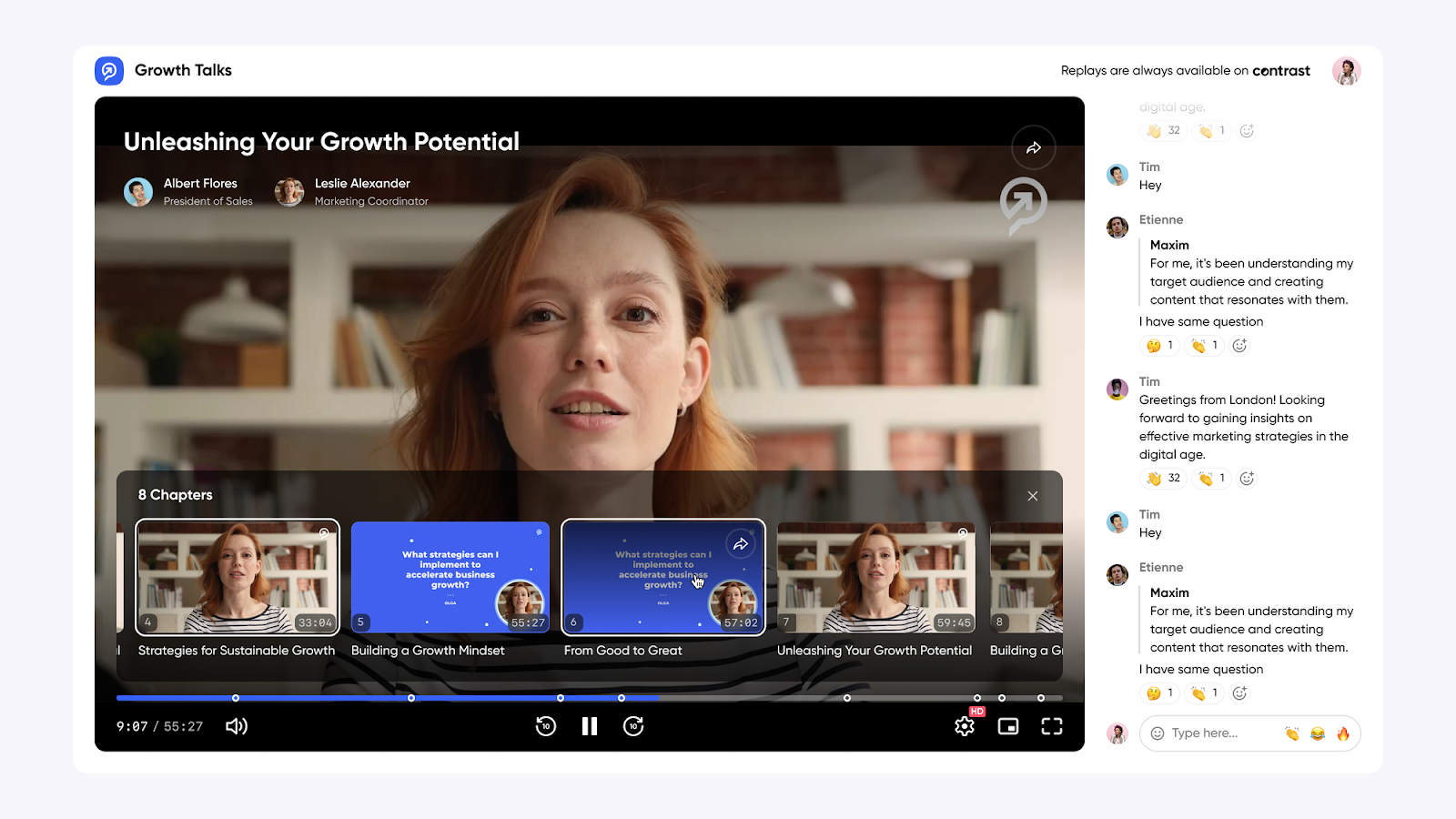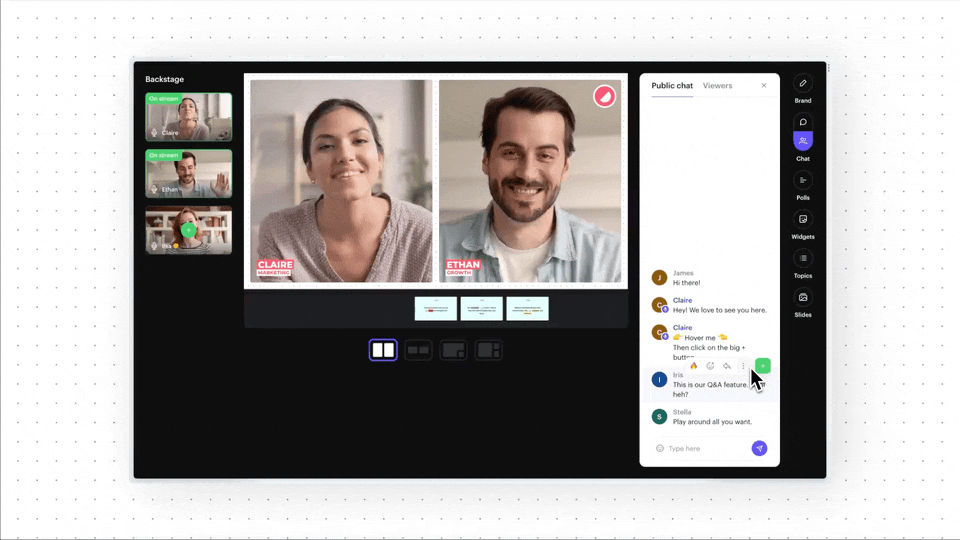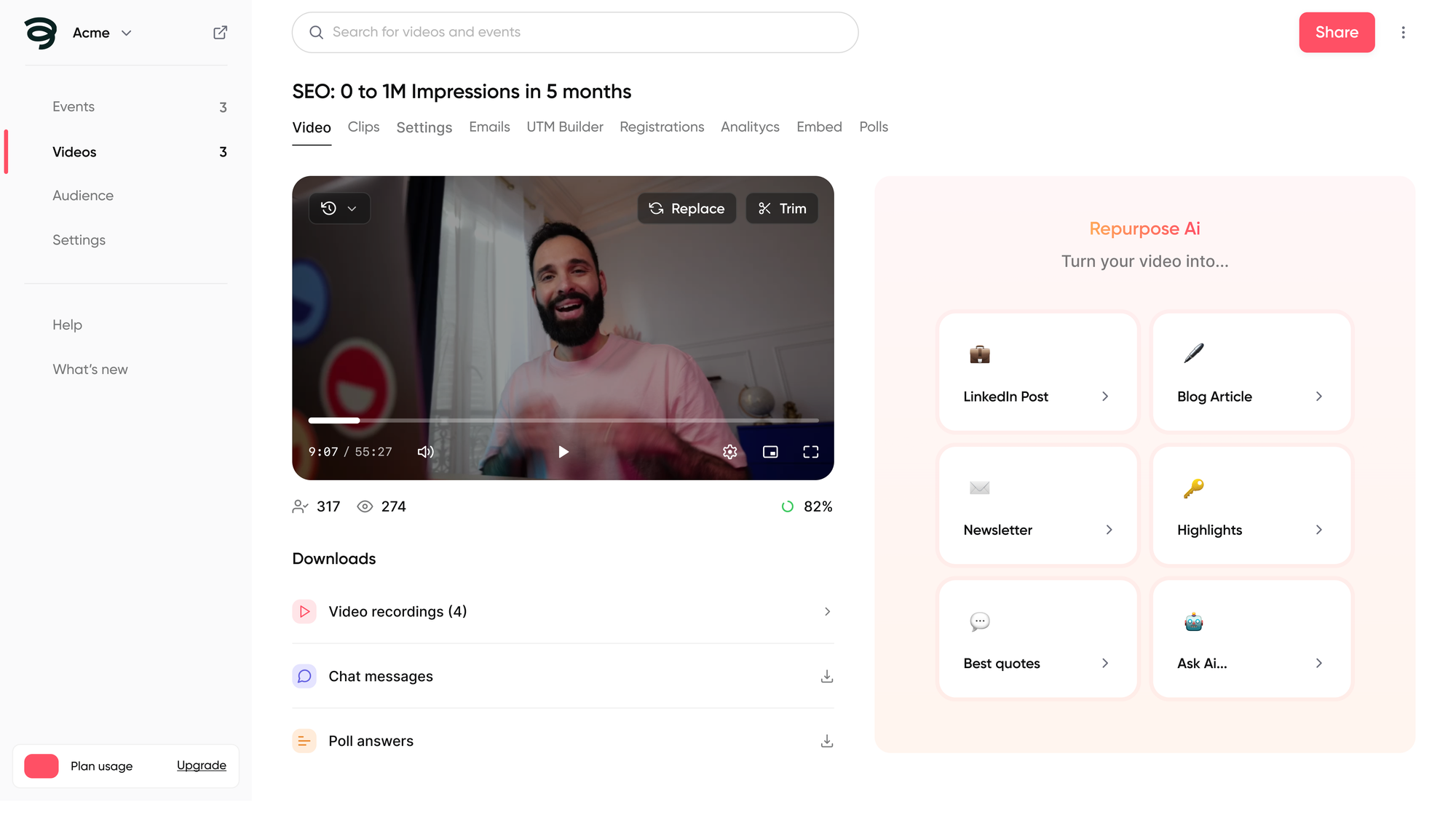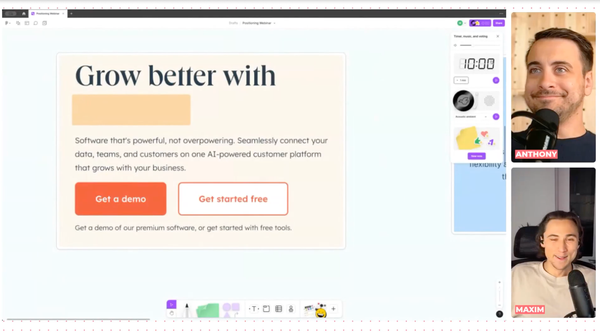Video marketing isn't an exclusive club for giant corporations with endless budgets. Businesses of all sizes are now seizing the power of video to connect with their audiences.
Think about it; more than 500 hours of video content is uploaded to YouTube every minute. That's more content than anyone could digest in several lifetimes. All things considered, this potential for exposure is no longer just a big brand luxury. It's becoming a necessity for businesses of all sizes to hold a stake in the digital world.
This blog acts as a guide through the promising world of video marketing that is no longer confined to the high walls of corporate giants.
What is Video Marketing
Video marketing is simply using videos to promote and market your product or service. It's about grabbing attention and engaging your audience in a way that's both visual and informative.
Imagine a tech company with an innovative new product. They can create a short, engaging explainer video demonstrating how their software solves complex problems. This video can be shared across social media platforms, embedded in emails, and displayed on their website. That's video marketing. Using video to promote your business.


Try the Best Video Marketing Tool
Start for free up to 30 registrants. No credit card needed.
Start for freeWhy Video Marketing Matters for Businesses
The Affordability of Video Marketing
With the number of available free online tools and platforms, video marketing has become more affordable than ever. It's no longer exclusive to companies with extravagant marketing budgets.
Gone are the days when creating a video meant hiring a professional videographer and spending thousands on high-end equipment. In its place, a simple smartphone and some creativity can go a long way.
Affordable, easy-to-use recording, editing, and distribution software is widely available, making it simpler for companies to produce compelling content with minimal cost and effort. They also allow for quick and easy changes, making it possible to adapt the content to evolving business needs and trends. This affordability allows businesses to compete in the video marketing space, reaching more audiences and boosting overall visibility.
Some of our favorite (and cheapest) video marketing tools:
- Contrast: webinars
- Descript: video editing
- Tella: screen recording
- Embed: video embed
- Talk: video conferencing
The Impact of Video Marketing on Business Growth
Video marketing can greatly impact the growth of businesses, even small ones. It has become a vital tool in establishing an online presence and driving customer engagement.
Customer engagement increases when a video is involved. By adding videos into their marketing strategy, businesses can enhance their interaction with potential customers.
Videos can also help improve SEO. Search engines favor websites with video content, leading to higher rankings in search results. This can improve a business's visibility among consumers and potentially improve sales figures.
Video SEO is also a great strategy to outrank competitors that might have bigger budgets, older domains, or more resources.
Not only that, but videos are shareable. They can spread across social media platforms quickly and drive more traffic to your website. If a video is enjoyable or informative, people are likely to share it, putting your brand in front of a larger audience without any additional effort or cost on your part.
In a digital world with short attention spans, videos grab attention quickly. They share your brand's message clearly. Videos are affordable and help grow your business. Video marketing is a tool businesses should use.
Types of Video Marketing Content
In digital marketing, using different types of video content can spread your message further. Here are some key types that work well for businesses.
Explainer Videos
These videos explain your company’s message in a simple way. They break down complex ideas into easy pieces. Explainer videos show how your product solves a problem. They quickly capture interest and help potential customers understand.
Product Demos
Product demos showcase how your products work and highlight their unique features. They offer a real-world perspective, helping potential customers see the benefits firsthand. These videos build trust and assist in making informed purchasing decisions, effectively boosting sales.
Customer Testimonials
Testimonials feature happy customers sharing their stories. They provide real and relatable content. This builds trust and shows the value of your product. It can be a big influence on new buyers.
Behind-the-Scenes Videos
These videos show your company culture and operations. They humanize your brand. This transparency builds trust and loyalty. It shows the team and processes behind your success.
Educational or How-To Videos
These videos show your brand as an expert. They provide helpful insights or instructions. This drives engagement and builds your reputation as a trusted partner.
Webinars
Webinars are a popular video marketing tactic. Webinars allow for interaction and deep discussions.
Companies across the world use Contrast to host webinars that attendees love.
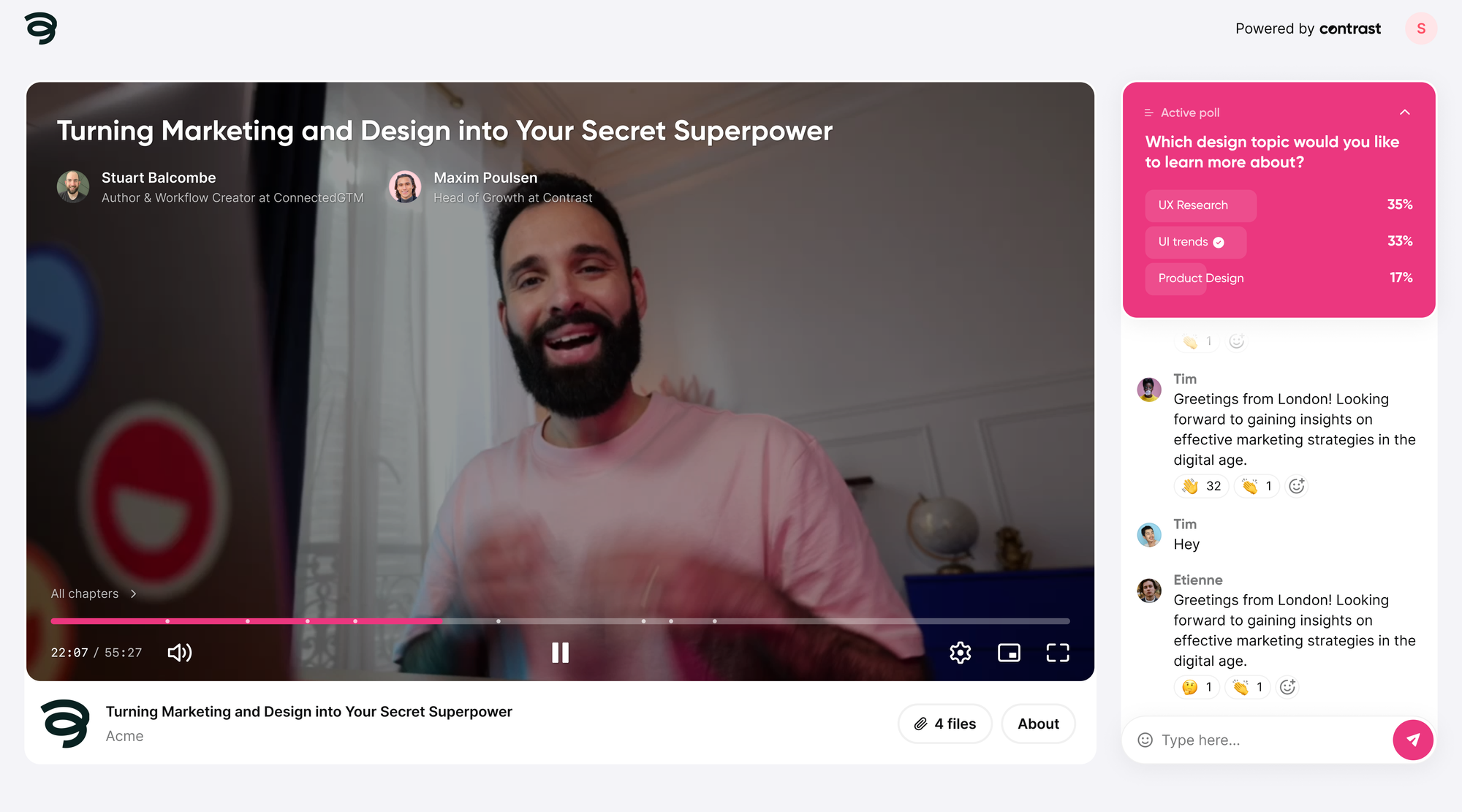
User-Generated Content
This content uses your customers' creativity. It encourages them to share their experiences with your products. This broadens your reach and boosts community engagement.
How to Build a Video Marketing Strategy
Now let's focus on how to build a video marketing strategy. First, you'll identify your video marketing goals. Next, choose video content that matches your brand and audience. Finally, you'll create engaging videos that capture attention.
Step 1: Define Your Video Marketing Goals
Taking the first step into the realm of video marketing starts with crystal clear goal setting. Are you aiming for increased brand awareness or focusing on boosting your lead generation? Perhaps your aim is user education about a particular new product or service. Your goals will guide your video marketing tactics, channeling your efforts and resources to achieve the desired outcomes.
These goals must be measurable and tied to metrics that provide insight into your video marketing performance. Without measurable goals, your strategy could drift off course like a boat without a compass. Measurable goals offer meaningful targets as well as indicators of when adjustments are necessary to stay on track.
SMART goals are a powerful framework for setting clear, achievable objectives. The acronym SMART stands for Specific, Measurable, Achievable, Relevant, and Time-bound. Each element serves as a guideline to ensure your goals are well-defined and within reach.
- Specific means your goal should be clear and precise, so you know exactly what you're aiming for. Instead of saying, "I want a lot of registrants for my webinar" specify the goal to something like, "I want 300 people to register to my webinar"
- Measurable criteria allow you to track your progress. For the webinar goal, it's easy to measure the number of registrants in your webinar dashboard.
- Achievable means setting realistic goals that you're capable of accomplishing. It's about finding the balance between challenging yourself and not setting yourself up for failure.
- Relevant ensures that your goal matters to you and aligns with your other business objectives. It's about making sure the goal is worth your time and effort.
- Time-bound adds a deadline, creating urgency and helping you focus. For example, aiming to achieve those 300 registrants for your next webinar in 2 weeks.
Step 2: Choose the Right Type of Video Content
The second stage of your journey urges you to consider video content types that will best match your identified goals. If your intention is to build brand awareness, perhaps an entertaining viral-style video would work well. To nurture leads, consider informative webinars or product demonstrations. When educating users is the primary goal, tutorial or how-to videos might be the gold standard.
Each video category has its unique strengths and appeal, which may vary across different audience segments. It is crucial to match your video content to not only your goals but also your target audience's preferences and behaviors.


Try the Best Video Marketing Tool
Start for free up to 30 registrants. No credit card needed.
Start for freeStep 3: Create Engaging Video Content
Your content strategy will be significantly amplified by developing engaging video content that captures your audience's attention. Engaging content is more likely to be viewed, shared, and sometimes even viral—increasing your brand's exposure immeasurably.
Focus on shaping content that resonates with your target audience, appealing to their interests, values and addressing their pain points. Videos that offer solutions to problems will naturally draw an audience. Integrating storytelling into your videos can also enhance their appeal, creating an emotional connection with viewers.
Take advantage of tools and techniques that enhance engagement. Call to actions, for example, can guide viewers to a follow-up step, while captions can make your video content accessible even when the sound is off.
Using interactive tools is a great way to create more engaging video content: the best webinars are those where you feel like you're having a conversation with the hosts. Running Q&A sessions, polls, or interacting in the chat are great ways to make your videos more engaging.
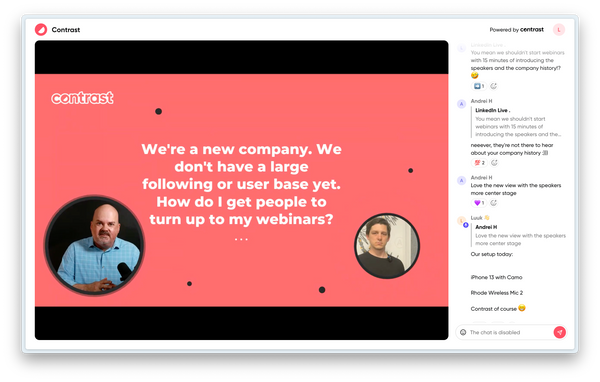
Video marketing is not a maze that only big brands can navigate. With clear goals, the right content, and a focus on engagement, businesses of all sizes can reap tremendous benefits from an expertly executed video marketing strategy.
Boosting Brand Awareness with Video Marketing
Videos are powerful tools for building a strong online presence. Well-made videos help businesses show their values and unique features. They engage audiences with a mix of sights and sounds.
Good visuals spread brand messages quickly. They reach more people and different customer groups. According to HubSpot marketing statistics, 89% of people say that they’ve been convinced to buy a product or service by watching a brand’s video. (Wyzowl, 2023)
Our data shows that customers that run branded webinars have higher registration rates, attendance rates, and end up selling more & better than customers that don't brand their webinars.
💡
Many B2B businesses suffer from a lack of fun. Think of how you can make your videos and virtual events more fun.
Driving Sales with Video Marketing
The main goal of marketing is to boost sales. Video marketing is great for this. Well-designed videos can increase conversion rates. But to succeed, the content must match what customers need and like.
Product demos, webinars, explainer videos, customer testimonials, and even simple promotional clips can play significant roles in nudging consumer behaviors. They offer a visually rich, informative, and persuasive insight into a product or service that other content types fail to replicate.
All of these types of video marketing fit into a funnel, slowly driving your leads from simply aware of your brand, to being fully-fledged customers.
Remember, the success of video marketing strategy in driving sales is heavily dependent on understanding and catering to the target audience's behaviors, expectations, and pains. Therefore, any video marketing strategy must place the customer at its core.
Keeping Up with Video Marketing Trends
- Discover how short-form video content is grabbing attention
- Understand the crucial role of Video SEO in marketing
The Rise of Short-Form Video Content
People's attention spans are getting shorter; thus, short-form video has risen to popularity. Considered to be 60 seconds or less, these bite-sized videos are shared on social platforms like Instagram, Twitter, TikTok, and Facebook. The advantage? They're cheaper, quicker to produce, and can reach a broad audience with minimal budget. But what's most important - they engage viewers quickly, providing brands a chance to stand out amidst all the digital clutter.
These snappy, addictive videos are perfect for mobile users, who now make up over half of all worldwide online traffic. Whether it’s a tutorial, a behind-the-scenes glimpse into your business, a customer testimonial, or a simple product demo – short-form videos can powerfully convey your message even in a bite-size format. This trend is here to stay, and marketers should ready themselves to make the most of it.
Using the hub and spoke model popularized by Gary V., create long-form video content (like a webinar) and then turn that main piece of content into different shorter form pieces of content: social posts, clips, blog articles, etc. You can also make it available on-demand to keep driving people to watch that content.
The Importance of Video SEO
Rarely do people see unsearched video content. That's why Video SEO is important. By optimizing your videos for search engines, you're increasing visibility, driving more organic traffic, and boosting engagement. And when the content is engaging, it drives viewers to share, potentially going viral. Overall, Video SEO adds value to your overall SEO strategy - helping your brand to rank higher in both video and web searches.
